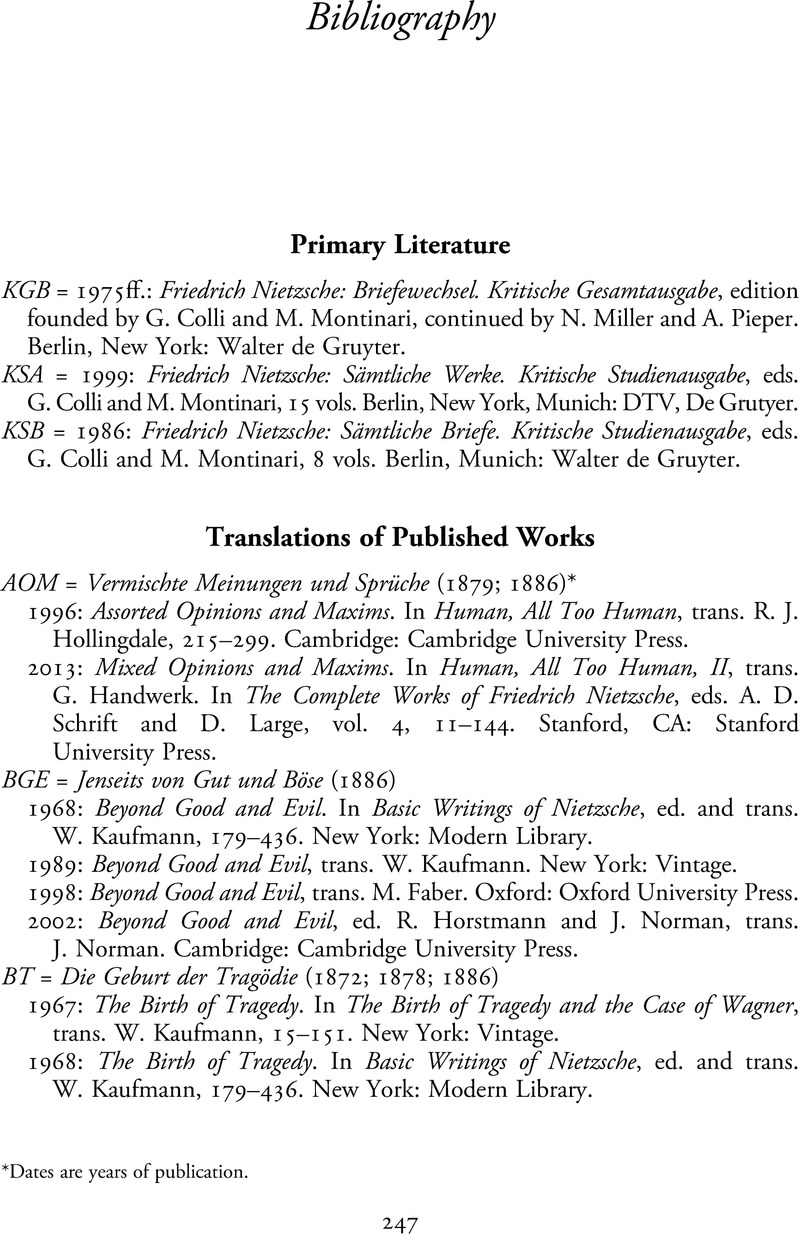Book contents
- Nietzsche’s Thus Spoke Zarathustra
- Cambridge Critical Guides
- Nietzsche’s Thus Spoke Zarathustra
- Copyright page
- Epigraph
- Contents
- Contributors
- Acknowledgments
- Note on Texts, Translations, and References
- Abbreviations
- Introduction
- Chapter 1 Laughter As Weapon
- Chapter 2 Philosophy As a Way of Life in Thus Spoke Zarathustra
- Chapter 3 What Makes the Affirmation of Life Difficult?
- Chapter 4 Zarathustra’s Response to Schopenhauer
- Chapter 5 Nietzsche’s Naturalism and Thus Spoke Zarathustra
- Chapter 6 Nietzsche’s Solution to the Philosophical Problem of Change
- Chapter 7 Zarathustra’s Moral Psychology
- Chapter 8 Zarathustra’s Great Contempt
- Chapter 9 The Great Politics of Thus Spoke Zarathustra
- Chapter 10 Joyful Transhumanism
- Chapter 11 Nietzsche on the Re-naturalization of Humanity in Thus Spoke Zarathustra
- Bibliography
- Index
- Cambridge Critical Guides
- References
Bibliography
Published online by Cambridge University Press: 09 June 2022
- Nietzsche’s Thus Spoke Zarathustra
- Cambridge Critical Guides
- Nietzsche’s Thus Spoke Zarathustra
- Copyright page
- Epigraph
- Contents
- Contributors
- Acknowledgments
- Note on Texts, Translations, and References
- Abbreviations
- Introduction
- Chapter 1 Laughter As Weapon
- Chapter 2 Philosophy As a Way of Life in Thus Spoke Zarathustra
- Chapter 3 What Makes the Affirmation of Life Difficult?
- Chapter 4 Zarathustra’s Response to Schopenhauer
- Chapter 5 Nietzsche’s Naturalism and Thus Spoke Zarathustra
- Chapter 6 Nietzsche’s Solution to the Philosophical Problem of Change
- Chapter 7 Zarathustra’s Moral Psychology
- Chapter 8 Zarathustra’s Great Contempt
- Chapter 9 The Great Politics of Thus Spoke Zarathustra
- Chapter 10 Joyful Transhumanism
- Chapter 11 Nietzsche on the Re-naturalization of Humanity in Thus Spoke Zarathustra
- Bibliography
- Index
- Cambridge Critical Guides
- References
Summary

- Type
- Chapter
- Information
- Nietzsche's ‘Thus Spoke Zarathustra'A Critical Guide, pp. 247 - 264Publisher: Cambridge University PressPrint publication year: 2022

